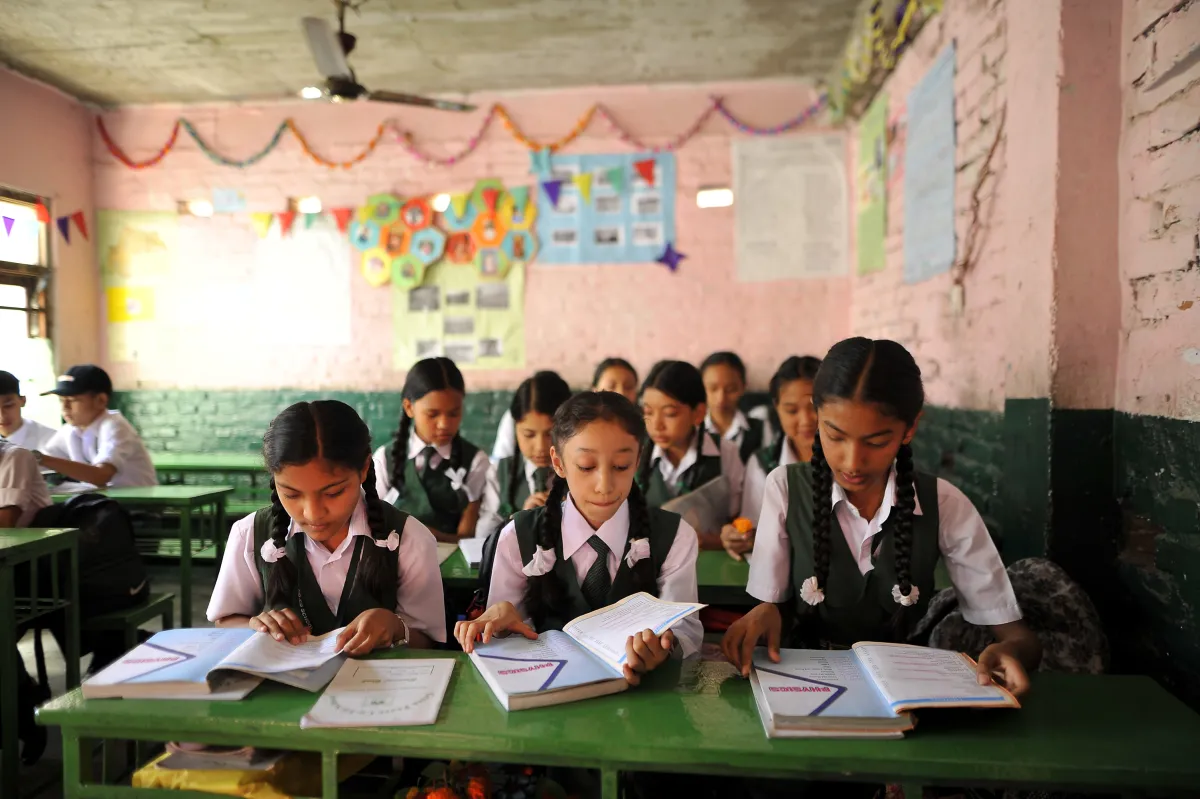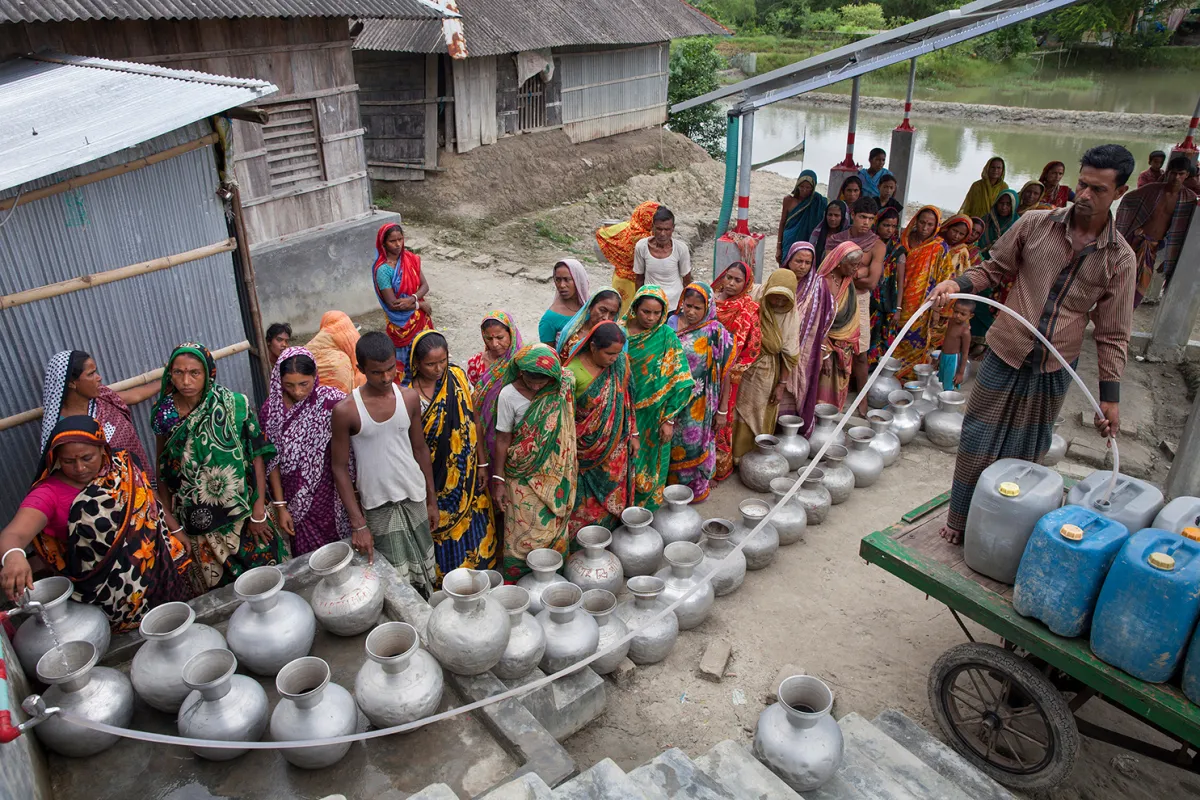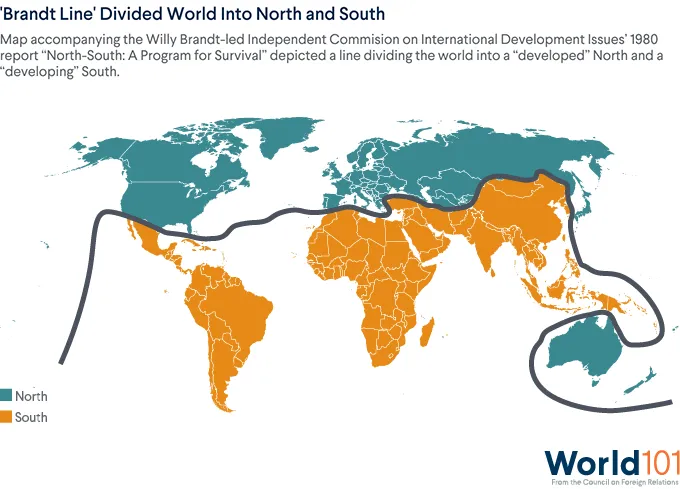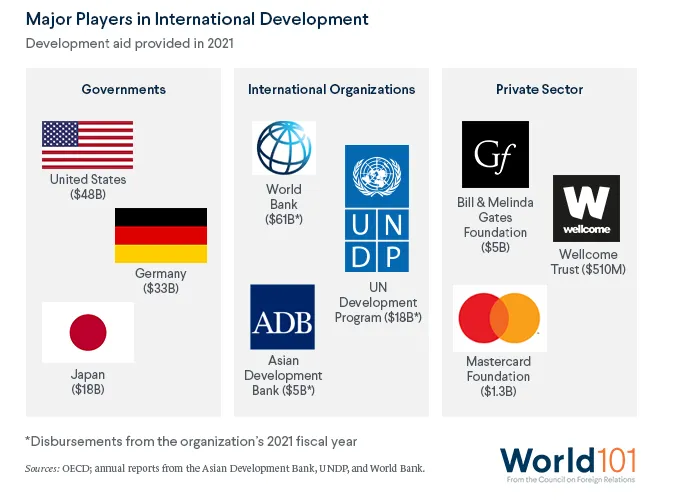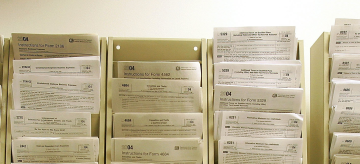What Is Development?
What are the terms, trends, and debates that define international development? Learn about the evolution of efforts to improve the world—including global infrastructure, education, and health.
International development activities come in several forms and are driven by various economic, security, humanitarian, or other reasons. Many scholars and practitioners see this work as increasingly central to broader efforts to secure international security and stability. Many suggest that improving development outcomes can help support a range of other outcomes, including democratization, conflict prevention, and climate resilience. For others, international development is an important form of international influence known as soft power.
Historically, international development efforts focused on economic measures to expand countries’ gross domestic products (GDPs). Today, however, development is not just about economics. Many contemporary understandings of development include questions such as
- Are people able to move freely without discrimination?
- Are people able to access education and access decent work opportunities?
- Can they access quality health care and live in environments free of pollution?
- Do they have political equality and strong, free, and fair elections and institutions?
Many of those ideas are enshrined in the UN Sustainable Development Goals, which are globally agreed-upon goals for development progress.
International development: signs of progress
The world has much development progress to celebrate. For example, partly due to countries increasing their international development investments in other countries,
- approximately 1.1 billion people were lifted out of extreme poverty between 1990 to 2017;
- the proportion of undernourished people in developing countries dropped 50 percent, from 23.3 percent to 12.9 percent, between 1990 to 2016;
- around 5.2 billion people used safe drinking-water services in 2015, and 2.6 billion people have gained access to improved drinking water since 1990; and
- world literacy rates have climbed from just 42 percent in 1960 to 87 percent in 2022, with the rise of investments in education.
International development challenges
But challenges persist, with some development progress stalling or even falling backward. For example,
- while inequality has declined between countries, inequality within countries has grown. Nearly three-quarters of the global population live in countries where inequality has grown since 1990;
- challenges related to climate change loom: on average, climate change displaces fourteen million people annually—more than ever before; and
- worldwide, women still earn just $0.77 for every dollar earned by men. Gender pay gaps persist in all countries and across all sectors.
Definitions and History
What exactly is international development? Why do wealthier countries invest in the development of foreign nations? And how have countries individually and collaboratively worked to support it?
What Are the Origins of International Development?
Contemporary international development broadly aims to support efforts, as promoted by the UN Development Program, to “end poverty, protect the planet, and ensure that all people enjoy peace and prosperity by 2030.” Those efforts emerged from a complex and evolving history. Initially, wealthy, Western countries (including many former colonizers) promoted development projects to support economic gains in poorer countries, oftentimes to support their own interests. Today, those efforts have expanded to address a broader set of goals for improving human welfare. Outside of purely economic understandings, those goals consider challenges shared by all countries alongside wealthy nations’ continued commitment to eradicating global poverty.
In 1952, French demographer Alfred Sauvy helped coin a framework that divided the world into three categories: the “first world” (comprising the U.S. and Western Allies), the “second world” (comprising the Soviet Union and the Eastern Bloc), and the “third world” (including nonaligned nations, many of which had recently achieved independence from colonizers, and countries that became known as developing). That framework supported efforts during the Cold War to spread geopolitical influence but was later replaced by new frameworks that offered a less polarizing approach to identifying and tackling development challenges.
What Is the “Global South”? What Are Low- and Middle-Income Countries?
In 1969, an American writer named Carl Oglesby coined the term Global South to refer to countries formerly known as third world, building that category based on a measure of gross domestic product (GDP) per capita or citizens’ average income. The term took firmer root when, in 1980, former West German Chancellor Willy Brandt led a commission tasked with analyzing the state of international development. It divided the world into the developed north and developing south, and its report included a map with a line depicting the division.
The terminology of Global South and Global North continues to be used in some settings to describe the world. For example, UN Secretary-General António Guterres stated in 2022 that “Many countries of the Global South face huge debts, increasing poverty and hunger, and the growing impacts of the climate crisis.” Still others have recommended retiring the term Global South as imperfect, as the world does not divide perfectly into two buckets. No clean north–south divide can fully encapsulate development challenges and opportunities. For some academics, analysts, and policymakers, those terms risk reinforcing inaccurate and outdated divisions and stereotypes, and ignore the diversity of challenges all countries face. Thus, researchers, policymakers, and practitioners continue to seek new terminologies to describe the state of international development.
Another alternative paradigm that global actors have substantially used is “low- and middle- income” countries, or “least developed countries.” The OECD, for example, assigns countries to a list based on income to help allocate aid. That paradigm categorizes countries based solely on their present economic situation. But critics find that approach can miss other important factors beyond solely economic challenges, such as levels of democracy, environmental sustainability, and human rights.
International Development Today
Who is involved in development financing?
Many different organizations and actors engage in development work all over the world. They often collaborate. Government agencies, such as the United States, Germany, and Japan, for example, disperse billions of dollars annually to support development projects abroad. International organizations, like the UN Development Program (UNDP) and the World Bank, are other significant players. Private sector agencies of various kinds, like the Bill & Melinda Gates Foundation or the Mastercard Foundation, are also important contributors to development.
Various parties finance and deliver international development activities, sometimes working in coordination. Governments are important actors in international development. Through official agencies and policies, they help drive approaches, coordinate national actors, and collaborate on an international level toward development goals. International organizations, such as the World Bank, the UNDP, and the Asian Development Bank, all help coordinate approaches to development and investments across multiple actors. Nongovernmental organizations (NGOs) and philanthropies have also helped advance global development beyond the confines of government action. For example, the Bill & Melinda Gates Foundation has distributed more than $7.8 billion to eradicate diseases around the world. Those and other private sector organizations, including for-profit businesses and their affiliated nonprofit foundations, often partner with public institutions to deliver development aid. According to the U.S. Agency for International Development (USAID), private sources now represent nearly 90 percent of financial flows to developing countries.
What Are the Categories of International Development?
Paradigms shaping international development today, some of which overlap, include the following:
- Humanitarian aid provides relief for people affected by natural and manmade disasters, especially when local authorities cannot provide adequate relief.
- Foreign aid, or foreign assistance, benefits a country’s economy, military, disaster response, or other function, though foreign assistance most often describes aid supporting economic development and security.
- Official development assistance (ODA) is development financing from governments managed by the Organization for Economic Cooperation and Development (OECD). The OECD directs financing to countries below a certain gross national income status; that group of countries composes the OECD’s Development Assistance Committee list.
- Philanthropic aid is provided by NGOs, such as the Bill & Melinda Gates Foundation, to support the organization’s focus areas, such as educating women and girls or eradicating malaria.
- Bilateral aid is provided by one country to another country.
- Multilateral aid is provided by multiple countries to one country.
- Grant aid can either support the provision of aid by, for example, financially supporting someone to work in a hospital in another country, or it can directly assist a government or group in a development project without expecting repayment—for instance, filling the financing gap for a local government building a bridge.
- Conditional aid is contingent on a country’s policy reform or other actions as a provision of receipt.
- ODA loans are an instrument for economic and social development managed by the OECD. ODA loans are the primary source of development financing.
- Private sector investment finance involves companies and individuals investing in developing economies. Although not a direct form of assistance, providing capital can support economic development.
Where Does International Development Money Flow?
Though substantial, international development funding flows vary depending on whether they are viewed as humanitarian assistance, military assistance, or other forms of spending. This funding is usually measured to indicate one country’s spending toward another country or set of countries abroad, but can also sometimes include spending within a country’s own borders on issues like refugee-hosting costs.
Humanitarian aid is a significant area of international spending globally. According to the UN Office for the Coordination of Humanitarian Affairs’ measurements, the United States spends the most in humanitarian aid, followed by countries in Europe, such as those in the United Kingdom, and Canada.
How Does the United States Finance International Development?
International development spending in the United States is administered by some fifteen government agencies, with leadership from the State Department and USAID, the primary agency for dedicated U.S. development activities abroad. USAID manages the bulk of U.S. development and humanitarian aid and nearly $20 billion in funds.
USAID is a semi-independent agency, operating under the policy guidance of the president, the State Department, and the National Security Council. Its programs are authorized by Congress as per the Foreign Assistance Act. Other U.S. agencies involved in development efforts include the Department of Defense, the Department of Health and Human Services, and the Treasury Department. Other institutions involved include the Millennium Challenge Corporation, the Peace Corps, and many private sector organizations and foundations like the Bill & Melinda Gates Foundation.
Overall U.S. aid flows have been connected to a range of activities, shaped, for example, by global crises, such as responses to the COVID-19 pandemic, conflicts, and wars.
In fact, aid spending flows have been linked to major U.S. security interests, as national security concerns tend to drive U.S. aid spending. For example, the War in Ukraine and related fallout since late 2022 has significantly increased U.S. foreign assistance spending, driving over $75 billion in U.S. aid to Ukraine since the war’s start.
Current U.S. international-assistance spending includes significant spending to support institutional strengthening of foreign governments and civil society, emergency response, and health.
How Is China Involved in International Development?
Experts have paid growing attention to China’s approaches to international development, particularly its Belt and Road Initiative (BRI). Launched by President Xi Jinping in 2013, the BRI includes a wide array of development and investment initiatives in Africa, Europe, Latin America, and Oceania, significantly broadening China’s economic and political influence. China’s approach to that massive development project has included a major focus on infrastructure investment to enhance its national interests and support economic and social development in recipient countries. The country has invested billions of dollars in roads, railways, and other infrastructure across Africa and Eurasia.
Why Does Defining Development Matter?
Ultimately, defining international development is important because it can shape development outcomes. How countries categorize one another can affect how funding flows between them. Some $24 billion was spent on international development in 2022 by large donor entities (those participating in the OECD’s Development Assistance Committee). Countries are increasingly calling for the reevaluation development paradigms to reflect a changing world facing new challenges.
Today’s Debates About International Development
Today, debates remain as to the best way to categorize the world and deploy development frameworks. Some organizations focus on certain metrics; for instance, the UN Development Program uses the Human Development Index (HDI), which factors in life expectancy, education, and income. In contrast, the World Health Organization predominantly focuses on health-care-related indicators, such as health-care accessibility, disease prevalence, and health-care infrastructure. Those classifications hold significance beyond statistical and analytical purposes, as they inform policymaking and resource allocation for development initiatives. Some measures have emerged to track progress. For example, the HDI, which measures development progress around the world, ranks the United States, Australia, Canada, the United Kingdom, and other countries across Northern Europe and highly in terms of development progress, while countries in sub-Saharan Africa score lowest.
New approaches to development and related terminologies are also emerging. One popular concept, sustainable development, takes a more comprehensive approach beyond the bottom-line economics of traditional development models. In sustainable development, goals for human welfare and environmental integrity are paramount with economic growth. And even developed countries can benefit from sustainable development, which seeks to reduce more universal inequalities. Another framework, decolonizing development, empowers local actors, rather than international agencies and organizations, to have more control over development funds and decisions—moving away from a history of developed economies determining what development looks like and what is best for smaller, less developed countries.
The Bottom Line on Development: A Global Challenge
It’s easy to think of the world as divided into two groups: developed and developing. But countries called developed, such as the United States, still have room for improvement and face some shared and evolving challenges with other countries of various stages of economic growth. Some of those challenges are global and require collective action from multiple economies and governments working in collaboration. That’s why policymakers worldwide have agreed on the UN Sustainable Development Goals, to improve international development everywhere.
Many development challenges remain. However, past progress can provide a hopeful blueprint for future progress. The potential to identify creative policy options lies in connected environmental, economic, and social strategies and actions that consider how to uplift the well-being of societies.
